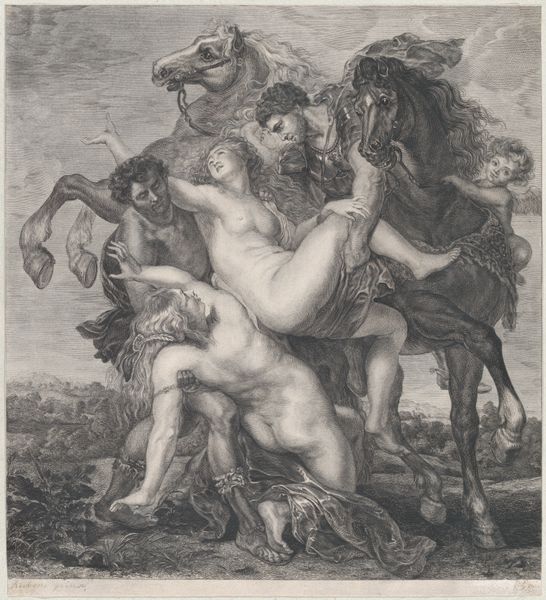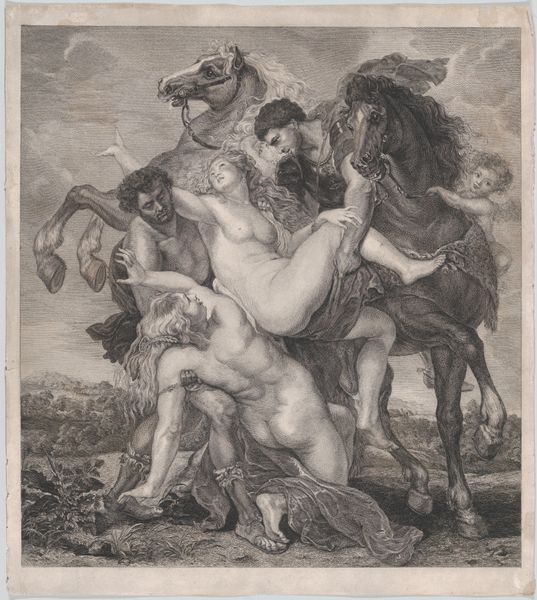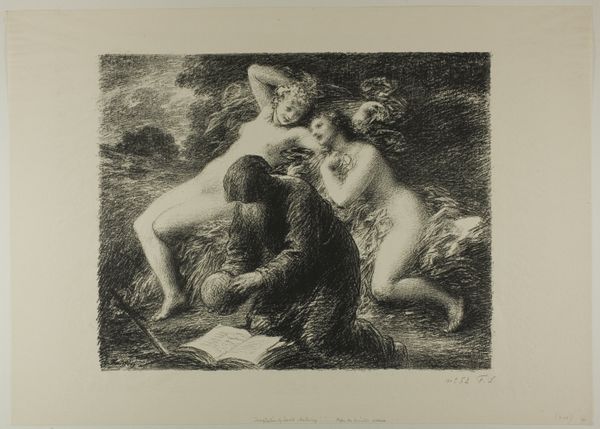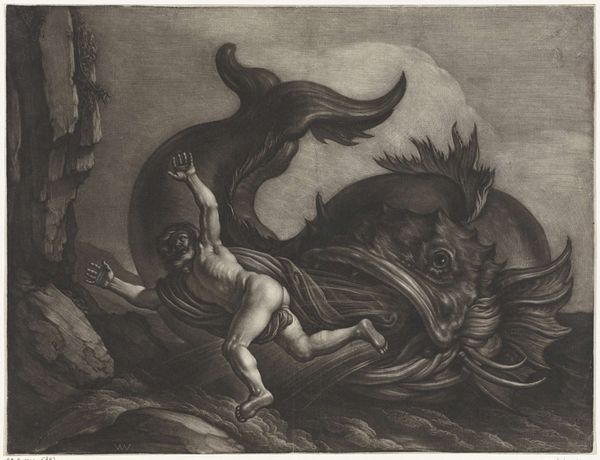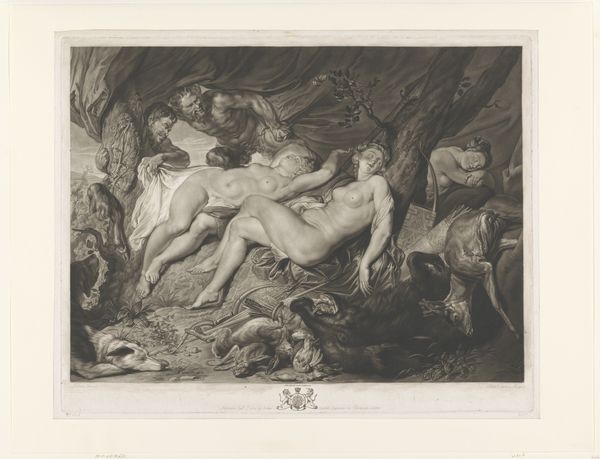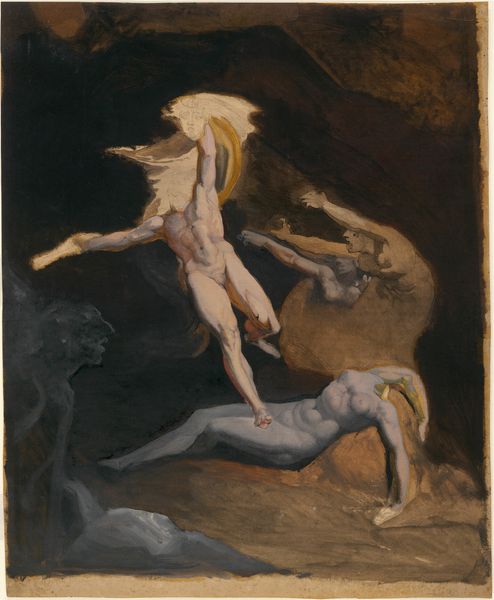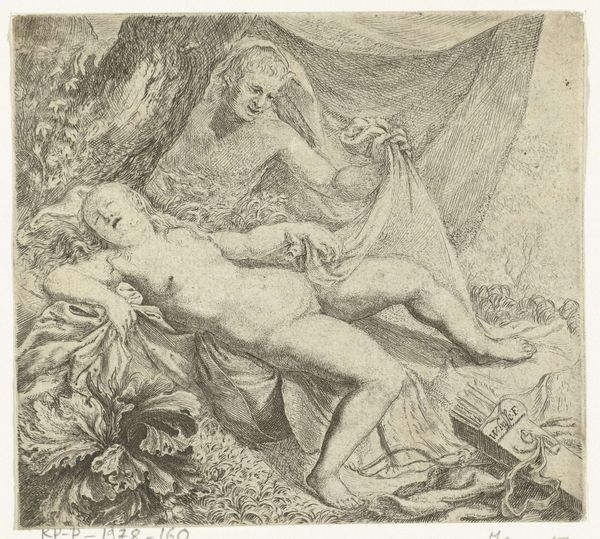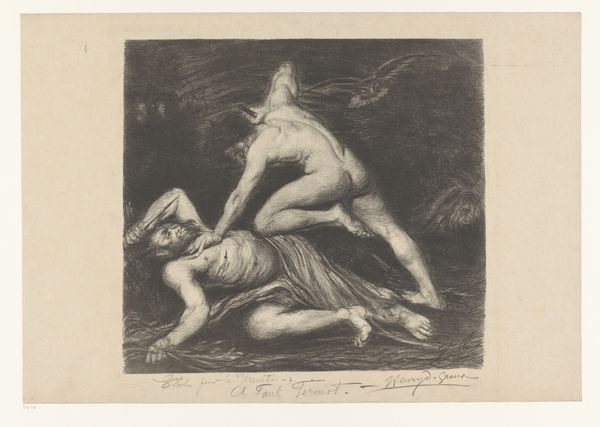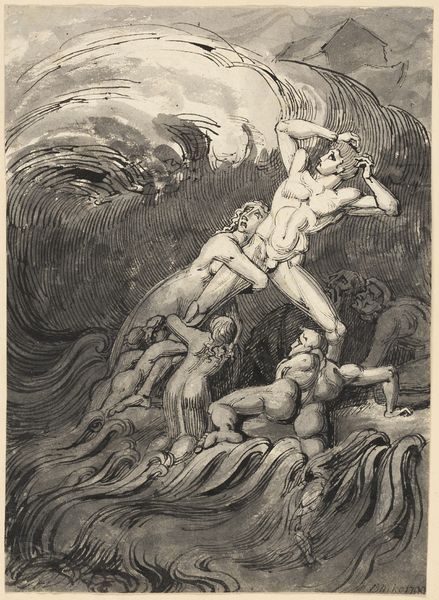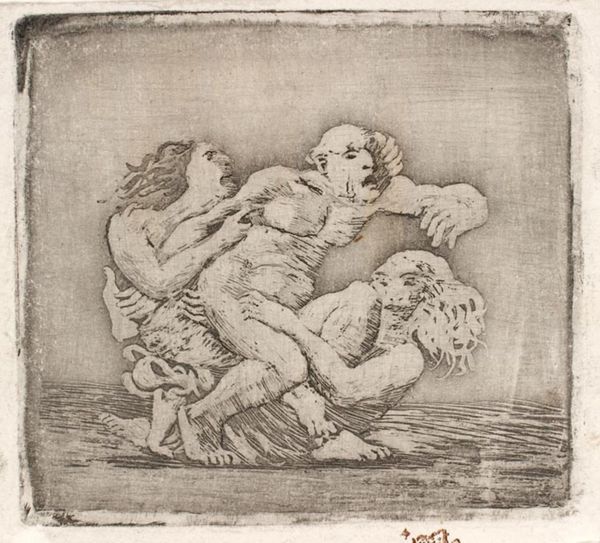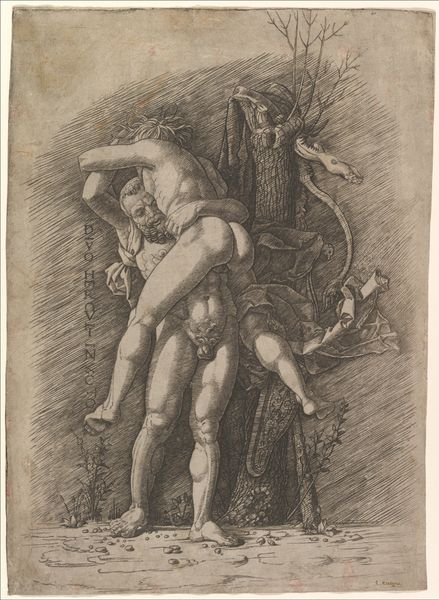
Rhadamistus Lowering Zenobia into the Araxes River 1856
0:00
0:00
Dimensions: 19 7/16 × 19 3/8 in. (49.4 × 49.2 cm)
Copyright: Public Domain
Editor: Here we have François-Nicolas Chifflart's drawing, "Rhadamistus Lowering Zenobia into the Araxes River," created in 1856 using pencil and charcoal. It’s at the Minneapolis Institute of Art. It's so dramatic and dark; it gives me a sort of operatic feeling, full of impending doom. What’s your take on it? Curator: It definitely has that feel, doesn’t it? For me, this drawing crackles with the raw energy of Romanticism, you know? It's not just a historical scene, it’s a dive into passion and turmoil, all those lovely big emotions, and crafted with such masterful technique. Look at how Chifflart uses the charcoal and pencil to sculpt the figures. Notice how the swirling graphite creates such a vibrant, yet sinister atmosphere! It's almost like the landscape itself is sharing the characters' torment. Do you see how the stark contrast adds to that mood? Editor: I do! It's interesting that even the horse seems to express distress, enhancing the dramatic narrative of the tragic story. Curator: Absolutely! Think of it like this, it's a single snapshot in a much longer, brutal story – Zenobia about to meet her watery end! What resonates with you most about it? Editor: I’m struck by the contrast between the figures and the almost abstract background. It highlights their plight, their isolation. Curator: Precisely. It’s in these delicate strokes and smudges that the artist unlocks a universe of human suffering. Editor: This artwork now has a newfound depth! Curator: Agreed. Art like this invites us to ponder how pain and sacrifice play out on life's grand, if messy, stage.
Comments
minneapolisinstituteofart almost 2 years ago
⋮
The tale of Zenobia involves incest, intrigue, murder, and sacrifice. Zenobia was the daughter of Mithridates, the king of Armenia, and his wife, who was Mithridates’ niece and the daughter of the king of Iberia. Zenobia’s husband, Rhadamistus, also a son of the Iberian king, was thus the brother or half-brother of her mother. What could go wrong' In the year 51 CE, Rhadamistus smothered Mithridates to death and usurped his throne. He made Zenobia his queen and ruled Armenia from 51 to 55 CE, though his tenuous grasp on power led to his ouster by the neighboring Parthians. Rhadamistus and the pregnant Zenobia were driven out of Armenia, toward Iberia. The journey proved too arduous for Zenobia. Preferring an honorable death to the shame of capture, she begged Rhadamistus to kill her. Admiring her heroism, he stabbed her with his scimitar, then laid her in the current of the Araxe River. Rhadamistus fled home to Iberia. Barely alive, Zenobia was discovered by shepherds, who delivered her to the safety of the Parthian king. Meanwhile, Rhadamistus’s father had his son executed as a traitor.
Join the conversation
Join millions of artists and users on Artera today and experience the ultimate creative platform.
